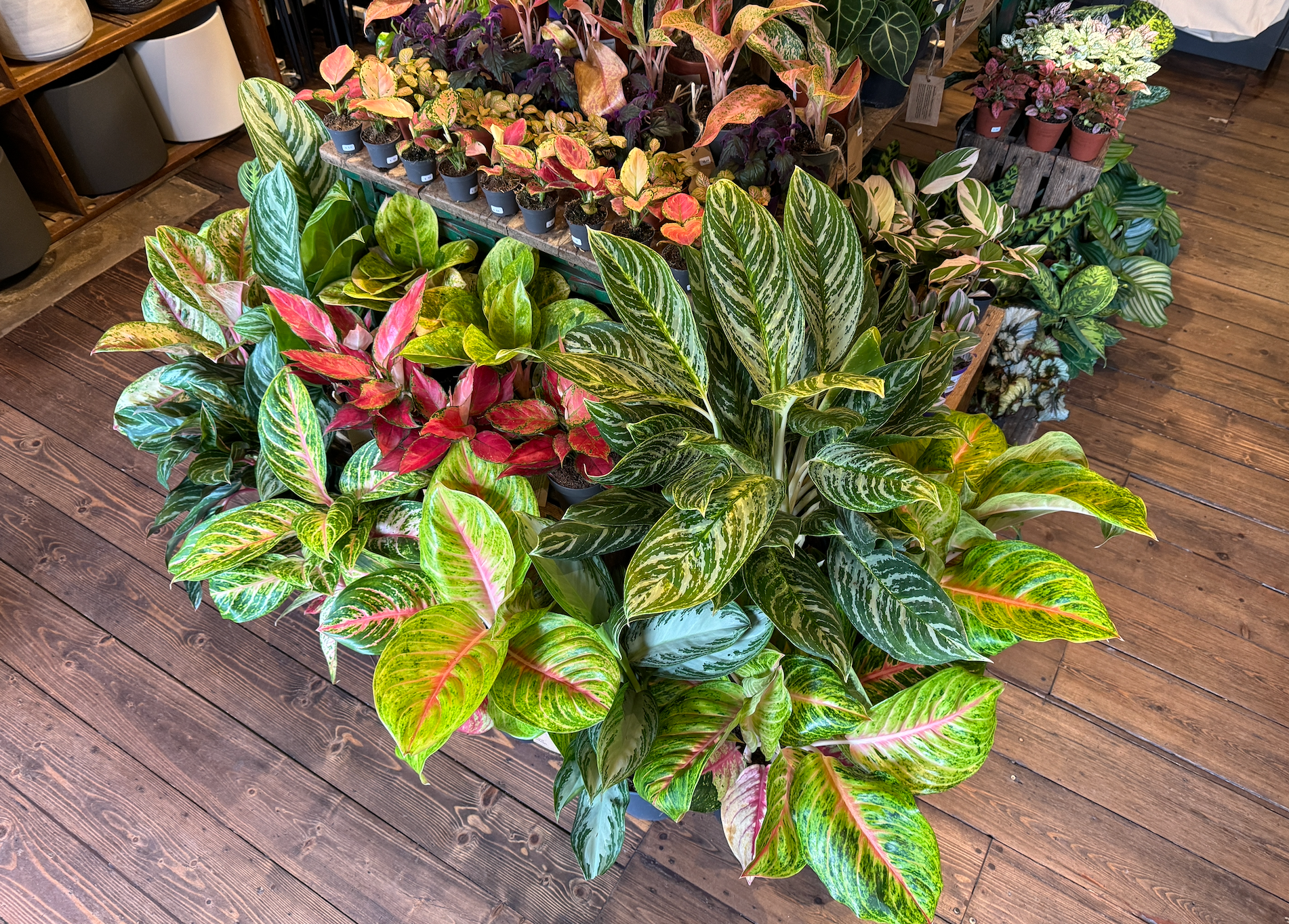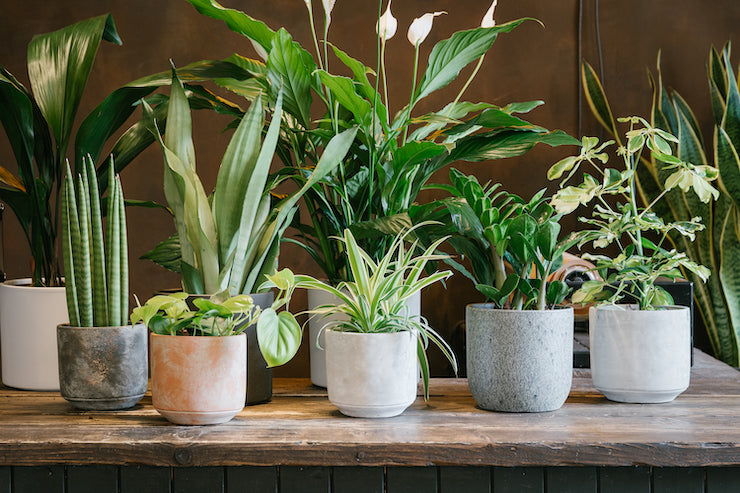
Caring for Aglaonema in the UK
Aglaonema genus - commonly referred to as the Chinese Evergreen, is a member of the Araceae family and can be found natively growing across Asia and New Guinea.
These plants prefer to grow on the rainforest floor where they are shaded from direct light under larger leafed plants. There are lots of varieties of this incredible genus to choose from including the striped, green leaves of the Aglaonema Maria to vibrant lime green and pink-veined leaves of the Aglaonema Cocomelon. For those with a rarer taste, look out for the unique camouflage patterned leaves of the Aglaonema pictum Tricolour.
Did you know Aglaonema are featured in NASAs list of the top air purifying plants? That’s right, these plants can be found listed alongside Spathiphyllum, Sansevieria and Ferns for their ability to improve air quality in our homes.
Caring for Aglaonema in the UK
If you are looking for a colourful option that isn’t high maintenance this genus is the perfect choice! Aglaonema are an easy one to place in the home as they can be positioned in bright, indirect light, but will also tolerate slightly shadier areas. Avoid placing your plant in a south facing window as this will cause the colourful foliage to scorch, or bleach. If kept in a shady spot, ensure that you rotate your plant occasionally to ensure even growth and dust the leaves to allow for optimum levels of photosynthesis. We recommend using our microfibre Leaf Love Gloves for gentle dust removal.
Aglaonema naturally grow in humid environments so misting throughout the week is useful in keeping their leaves looking lush and to prevent crispy leaf tips. Water Aglaonema thoroughly when the top half of the compost has dried out. When watering, we recommend removing the plant from its decorative pot and holding it over the sink until water begins to run from the drainage holes at the base of the plastic growing pot. Looking for a new watering can to make your plant watering a little easier? Check out our selection of Haws cans and find the perfect style, colour and size for your watering needs.
Aglaonema do not like cold draughts so ensure to place yours away from any draughty windows or doorways. During the growing season in the spring and summer, these plants require feeding every four weeks using a general houseplant feed. Our go to is Liquid Gold Leaf as this is a great multi-purpose feed that you can use across your plant collection. For those on a stricter budget choose Focus Houseplant 300ml.
In springtime, it is also important to check if your plant needs to be repotted. Your plant will give signs it is ready to size up if its roots begin to grow out of the drainage holes at the pot base. Alternatively, gently remove the plastic pot to see if there are roots densely spiralling at the base of the compost.
When repotting, choose a pot around 5cm larger in diameter than its current pot and ensure it has a drainage hole. Ideally, these plants do best when potted into a compost mix consisting of 50% Base Mix, 40% Bark (a great substitute for soil.ninja Bark is Orchid compost 8L) and 10% Zeolite. For those on a budget choose Houseplant Focus compost, but make sure to add 20% perlite to 80% compost for additional drainage. Aglaonemas are capable of flowering in the summer, however this genus is prized for their colourful evergreen leaves rather than their blooms.
Tips and Tricks for caring for Aglaonema in the UK
Why are my Aglaonema leaves turning pale?
Aglaonema leaves can bleach if they are placed in too much light so move your plant to a shadier spot.
Why are my Aglaonema leaves going crispy?
Too much direct light hitting the leaves. This happens as the sunlight becomes magnified through the window glass and causes scorch. Alternatively, this can be caused by dry air. Increase your misting throughout the week and ensure your plant is not placed too close to a dry heat source such as a radiator.
Why are my Aglaonema leaves turning yellow?
Aglaonema can be susceptible to overwatering and prefer that at least half of their compost dries out between waterings. To ensure your plant has sufficiently dried out, stick your finger into the compost to check if there is any remaining moisture. If there is – wait another couple of days! Alternatively, try a Moisture Meter to gauge if your plant is ready for a drink. Yellowing leaves can also be that the plant has run out of nutrients in the compost or space to grow so make sure to feed and repot in the spring and summer as needed.
We hope you enjoy this wonderful genus of plants and consider adding one to your home. Check out our Aglaonema stock.



